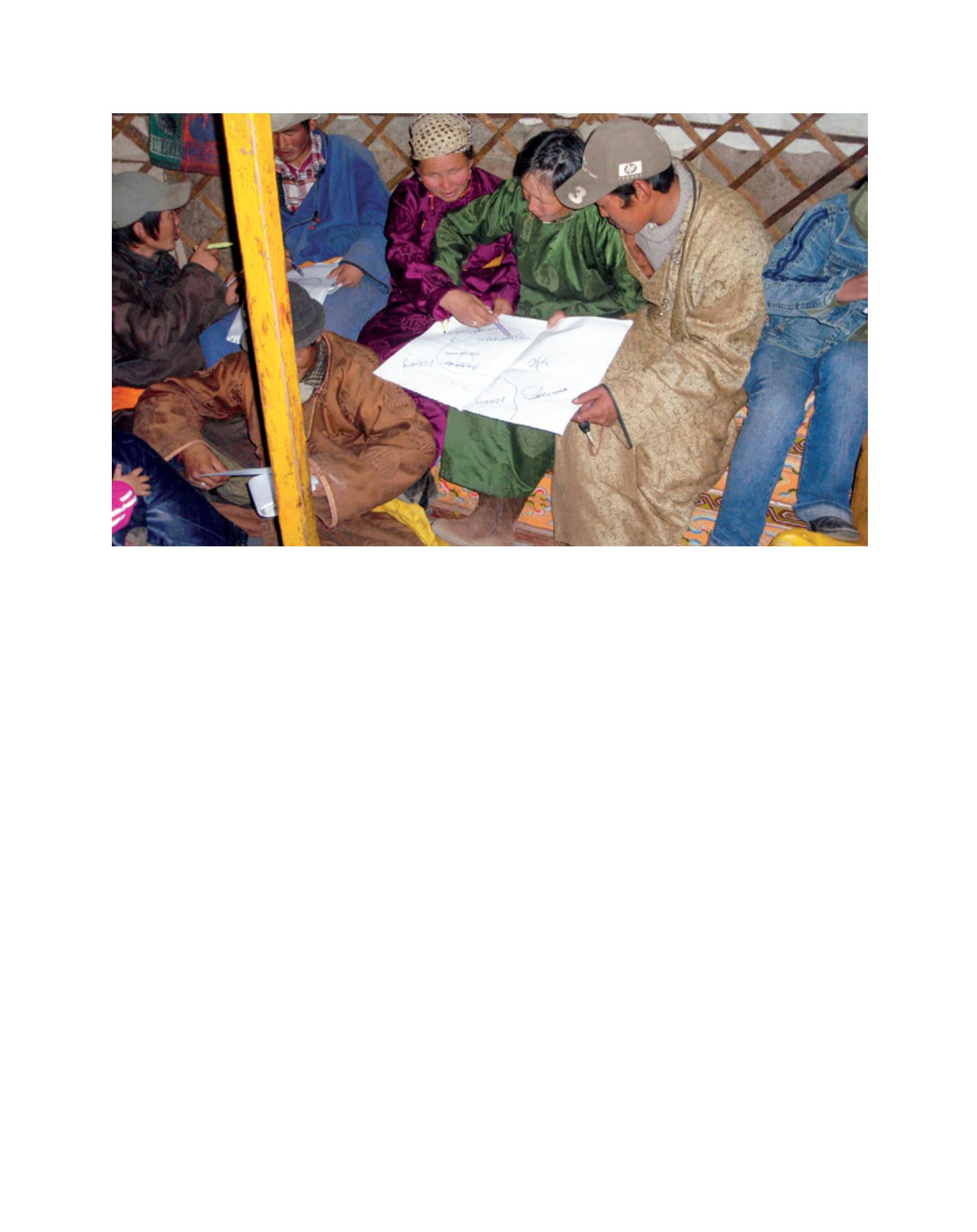

[
] 123
These factors lead to the degradation of grassland vegeta-
tion, which is considered a major trigger for sandstorm
occurrence. To solve these problems, it is necessary to
realize comprehensive management and utilization of
grasslands through planned pasture use suitable to their
conditions. In this regard, JIRCAS conducted a case study
aimed at creating pasture-use plans with the autonomous
participation of local nomads residing in the Taragt and
BaroonBayn-Ulaan soums (districts) in Ovorkhangai prov-
ince in mid-south Mongolia.
In Taragt soum, the grasslands had been used by the
native nomads in a traditional way. Recently, however,
the frequency of nomadic movement on these grasslands
had decreased, causing permanent use of these pastures
throughout the year and progressive localized overgraz-
ing. Degradation of the pastures used by nomads during
winter had been particularly pronounced, and the necessity
to reduce it was pointed out. In making the pasture-use
plans, we first divided all the nomads into groups that use
the same winter pasture and conducted vegetation surveys
for pastures in collaboration with each group. Thereafter,
we prepared the plans based on the reduction of local
pasture load by widely dispersing grazing livestock through
increased frequency of movement from winter to summer
or autumn pastures.
On the other hand, BaroonBayn-Ulaan soum is located in
the Gobi Steppe region where conditions for grass growth
are more severe; thus, the amount of grasses produced
there has been constantly insufficient, making it is neces-
sary to graze traditionally in the pasture of the adjacent
soum. However, since there are no existing rules or plans
regarding grazing in this pasture, pasture-related conflicts
between nomads of these soums, as well as vegetation
degradation, have occurred. To remedy the situation, we
included in the pasture-use plans a rule for this pasture,
indicating that no grazing throughout all seasons using
the whole area is allowed. This plan was discussed and
confirmed by nomads of both soums.
These plans cannot be expected to deliver the anticipated
outcome unless the nomads adopt them. To ensure their
implementation, necessary procedures to formalize them
were taken at the People’s Assembly of each soum and at
the regional villages (Bag). In cases where a plan extended
across an adjacent soum, an agreement between the govern-
ments of these soums would be concluded and the role of
each soum would be clarified to allow smooth implementa-
tion of the plan.
The adoption of these pasture-use plans resulted in an
increase in the movement of the nomad population from
one pasture to another from winter to summer or autumn in
Taragt soum, from 31 per cent in the year prior to the creation
of plans to 52 per cent the following year, and 74 per cent the
year after. Also, at BaroonBayn-Ulaan soum, with the conclu-
sion of agreements between governments, which had not been
done before, pasture utilization extending across neighbour-
ing soums was carried out according to the plan.
The procedures for creating the pasture-use plans, consul-
tations or agreements, monitoring and evaluation after
implementation were summarized in the guideline
1
for
drawing up the plans. We hope that this guideline will benefit
not only our study site in the Ovorkhangai province but also
other areas in Mongolia.
A group of nomads discusses the plan for the pasture they use at BaroonBayn-Ulaan soum
Image: T. Matsumoto
L
iving
L
and
















